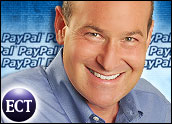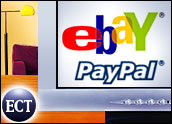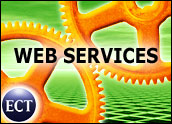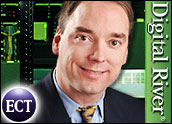
eBay business unit PayPal revolutionized the payments industry and catapulted e-commerce when it emerged as a credit card processor for person-to-person transactions on auction sites.
Today, about half of PayPal’s payments volume is from credit cards, but the service also allows consumers to register deposit accounts rather than using credit card firms like MasterCard or Visa. That means some transactions avoid credit card networks entirely and are reimbursed through direct withdrawals from a bank account.
The E-Commerce Times spoke with Todd Pearson, PayPal’s vice president of sales-merchant services, about the company’s future, and online payment and security.
E-Commerce Times: With the PayPal Plus MasterCard, the company has made a mark in the brick-and-mortar world. Is there a plan to make the PayPal MasterCard a dual credit line card or a debit/credit combo tool now that PayPal is into virtual debit?
Todd Pearson:
That is an interesting idea. We’re still in the early stages of rolling out the virtual debit card (a MasterCard-branded ATM/debit card connected to a customer’s PayPal balance) and it is not our current focus to integrate the two products.
PayPal Plus continues to be a great payment option for consumers because they receive extended purchase protection, access to special financing offers and the convenience of integrated online account management and alerts.
The PayPal Virtual Debit Card allows PayPal customers to use their PayPal accounts anywhere MasterCard is accepted online — even if the merchant does not currently accept PayPal. While similar in concept, both of these products serve different customer needs and we expect them to continue as separate products.
ECT: Does PayPal project a future as an e-enabled and brick-and-mortar payment network not dependent on Visa, American Express, Discover or MasterCard, with alternative payment clearance that avoids these networks and credit issuers?
Pearson:
There is so much opportunity in our key areas of focus — the eBay marketplace, international market expansion and merchant services — that’s where we plan to continue dedicating our resources.
ECT: How risky are PayPal’s innovations currently in the works, including the virtual debit card, mobile payment and the password-generating key fob?
Pearson:
Consumers and businesses use PayPal because it is a safe, low-cost and convenient way to pay online. PayPal currently has more than 133 million accounts worldwide, and our users transacted more than (US)$38 billion on the PayPal system in 2006.PayPal’s new products are very secure.
With PayPal Mobile, all transactions are protected by a PIN, just like an ATM or debit card. The PayPal Virtual Debit Card provides additional security for online purchases by generating a virtual card number for every purchase. The PayPal Security Key fob gives customers an extra layer of security to protect themselves against online identity theft and account takeover. We continue to take the safety of our buyers and sellers very seriously. Look for more security innovations from PayPal throughout 2007.
ECT: Why is the key fob available only in the United States, Germany and Australia? Are these the PayPal markets with the highest incidence of phishing?
Pearson:
We chose the U.S., Germany and Australia based on feedback from our user community that they were ready for this type of product. Based on customer response to this initial rollout, we may eventually offer the PayPal Security Key to more customers worldwide, but these things take time. Stay tuned — PayPal’s recent initiatives have been very well received so far. Feedback from our users has been positive.
ECT: Were these advances always the objective of PayPal? Or was PayPal in its creation only about person-to-person payments?
Pearson:
PayPal has evolved tremendously since its founding. In its earliest days, PayPal was created as a way to beam money between Palm Pilot devices. The technology was then adapted to transfer money online, which increased our potential market opportunity substantially.
In the meantime, another phenomenon had already taken shape, and that was eBay. But as exciting as eBay was in the early days, the payments process was cumbersome. Buyers would have to mail paper checks or money orders, and sellers would have to wait for those payments to clear before they would ship items. So, transactions on eBay would sometimes take weeks to settle.
When PayPal came along, there was a remarkable need for instant payments on the marketplace, so eBay buyers and sellers adopted PayPal en masse. From there, PayPal’s growth was explosive. And soon, many eBay buyers and sellers realized that the same benefits that make PayPal the best way to pay on eBay also translate to online shopping off of eBay. So, merchants of all sizes, including Barnes & Noble, iTunes and Dell started accepting PayPal on their Web sites. Today, 133 million buyers and sellers continue to use PayPal wherever they do business online.
ECT: Does PayPal expect more competition from the traditional payments processors, merchant acquirers and credit card-issuing banks? Does it expect more multi-currency processors to surface and succeed?
Pearson:
PayPal works closely with a variety of partners including those in the payments processing, acquisition and credit card industries. I can’t speculate on the future, but e-commerce is a strong and growing market, and there is room for many different types of payment options. We’ll continue to focus on providing a safe, simple and convenient way to pay online.























































Social Media
See all Social Media